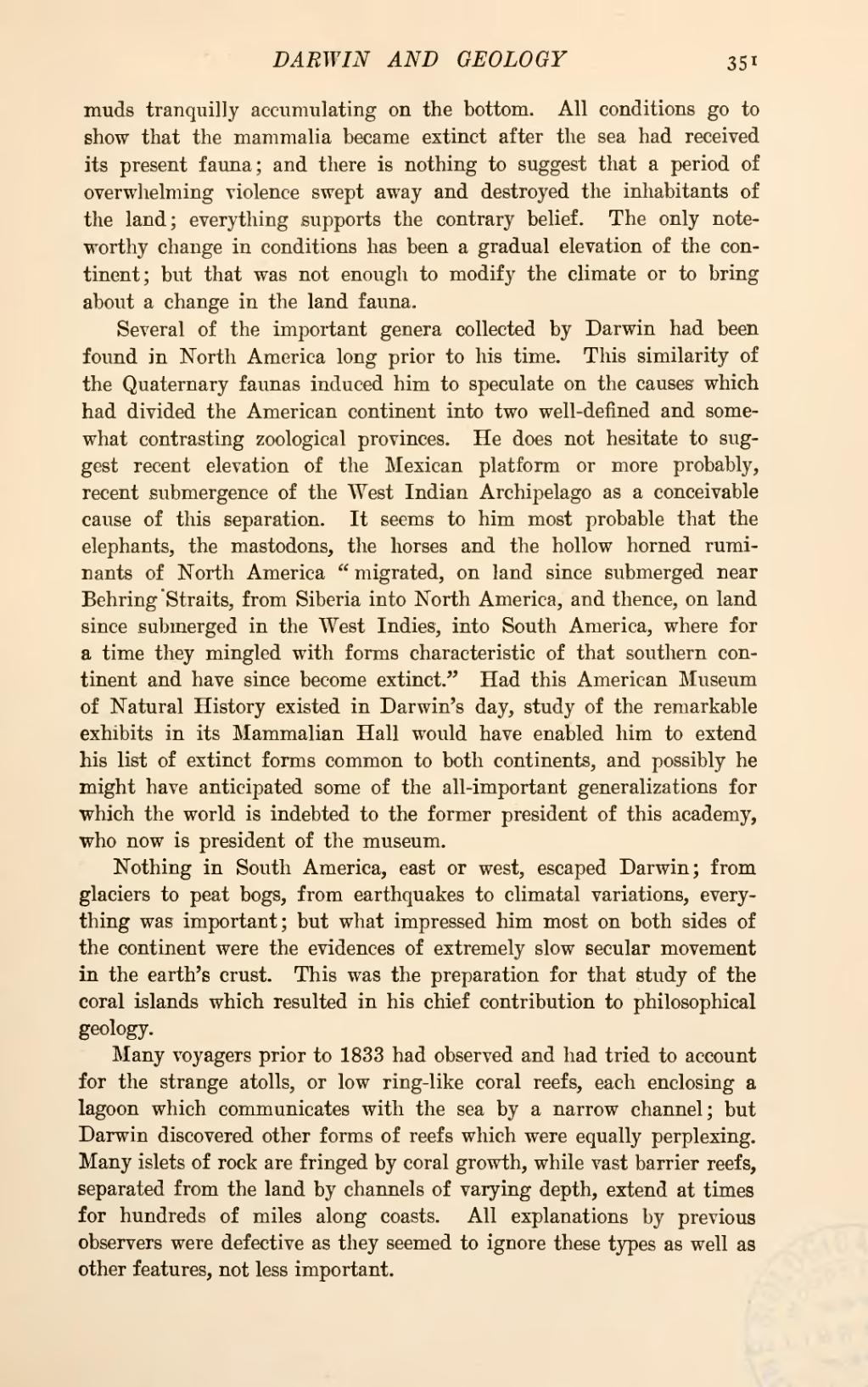muds tranquilly accumulating on the bottom. All conditions go to show that the mammalia became extinct after the sea had received its present fauna; and there is nothing to suggest that a period of overwhelming violence swept away and destroyed the inhabitants of the land; everything supports the contrary belief. The only noteworthy change in conditions has been a gradual elevation of the continent; but that was not enough to modify the climate or to bring about a change in the land fauna.
Several of the important genera collected by Darwin had been found in North America long prior to his time. This similarity of the Quaternary faunas induced him to speculate on the causes which had divided the American continent into two well-defined and somewhat contrasting zoological provinces. He does not hesitate to suggest recent elevation of the Mexican platform or more probably, recent submergence of the West Indian Archipelago as a conceivable cause of this separation. It seems to him most probable that the elephants, the mastodons, the horses and the hollow horned ruminants of North America "migrated, on land since submerged near Behring Straits, from Siberia into North America, and thence, on land since submerged in the West Indies, into South America, where for a time they mingled with forms characteristic of that southern continent and have since become extinct." Had this American Museum of Natural History existed in Darwin's day, study of the remarkable exhibits in its Mammalian Hall would have enabled him to extend his list of extinct forms common to both continents, and possibly he might have anticipated some of the all-important generalizations for which the world is indebted to the former president of this academy, who now is president of the museum.
Nothing in South America, east or west, escaped Darwin; from glaciers to peat bogs, from earthquakes to climatal variations, everything was important; but what impressed him most on both sides of the continent were the evidences of extremely slow secular movement in the earth's crust. This was the preparation for that study of the coral islands which resulted in his chief contribution to philosophical geology.
Many voyagers prior to 1833 had observed and had tried to account for the strange atolls, or low ring-like coral reefs, each enclosing a lagoon which communicates with the sea by a narrow channel; but Darwin discovered other forms of reefs which were equally perplexing. Many islets of rock are fringed by coral growth, while vast barrier reefs, separated from the land by channels of varying depth, extend at times for hundreds of miles along coasts. All explanations by previous observers were defective as they seemed to ignore these types as well as other features, not less important.

